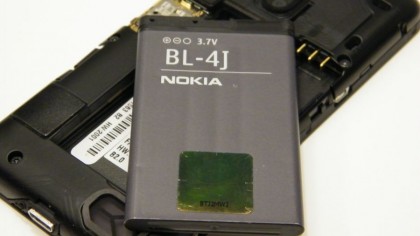The battery research that could change your phone, and the world
Has it run out of juice?

There have been some incredible promises in battery technology, from juice packs which can be charged just by moving them, to phones powered by fuel cells. These are things which have the potential to transform the way we use our handsets. But so often they get reported on and then go M.I.A, disappearing back into labs only to reappear years later or just be quietly forgotten about.
We didn't want to leave them to disappear though, so we did some digging and found out where things are now for some of the most intriguing battery related projects that we've reported on in the last few years.
Kinetic chargers
One of the most exciting areas of battery research that we've covered is the use of kinetic energy to recharge a battery. The idea being that just by moving your hand while holding your phone or potentially even by just walking around with your phone in your pocket you could charge it.
In theory it's a game-changing idea as it would mean that you'd no longer be in danger of ever running out of battery, or at least if you did then a vigorous shake of your phone could eke some life back into it, rather than you having to rush home to charge it.
This was the plan being put forward by U.S start-up M2E Power back in 2007. The company claimed to have developed a way to make this a reality and stated that its power packs would also use 30 to 40 percent less heavy metals than conventional lithium-ion batteries.

Back then it looked like it would be at least 2010 before development had reached the point where these batteries would find their way into phones, but that was several years ago and we're still stuck plugging our handsets into chargers every night.
So what happened? Well, back in June 2009 M2E Power announced that it had changed its focus to the vehicle market, and then a month later the company had sold itself to Motionetics.
Sign up for breaking news, reviews, opinion, top tech deals, and more.
Motionetics was also working on kinetic energy technologies, so the hope of motion powered phones may not have been lost, though the company's focus seems to be on military applications.
However there's hardly a mention of the company online, just a few references in old articles and a dead website, so it doesn't look like Motionetics is still around.
We were able to get in touch with Eric Apfelbach, the ex-CEO of M2E Power and we asked him what went wrong. Apparently the technology used by M2E Power involved a compressed peak linear magnetic field which the inventor claimed could produce more power at a significantly higher power density than conventional fixed magnetic devices.
Unfortunately it turned out that the calculations surrounding the capability of the technology were wrong and there was very little which could be done with it in a commercial sense. Motionetics bought the company in the hopes of applying the technology to Department of Defense projects.
Apfelbach moved on to greener pastures as the CEO of ZBB Energy, a company which develops and sells energy storage and power control technologies, but sadly kinetic phone chargers are not among its products.
Chance of it happening: Less likely than a flying pig.
Finger-powered phones
Back in 2011 we wrote about a technology being worked on at the Royal Melbourne Institute of Technology which would allow users to charge a phone or laptop simply by typing on its keyboard.

Granted, even back then phones were largely ditching keyboards, but a technology like this could lead to a resurgence in them and could also potentially be implemented into tablet keyboards.
James is a freelance phones, tablets and wearables writer and sub-editor at TechRadar. He has a love for everything ‘smart’, from watches to lights, and can often be found arguing with AI assistants or drowning in the latest apps. James also contributes to 3G.co.uk, 4G.co.uk and 5G.co.uk and has written for T3, Digital Camera World, Clarity Media and others, with work on the web, in print and on TV.